Instruction
The Ultimate Putting Program (Part 2): Putter weight affects speed
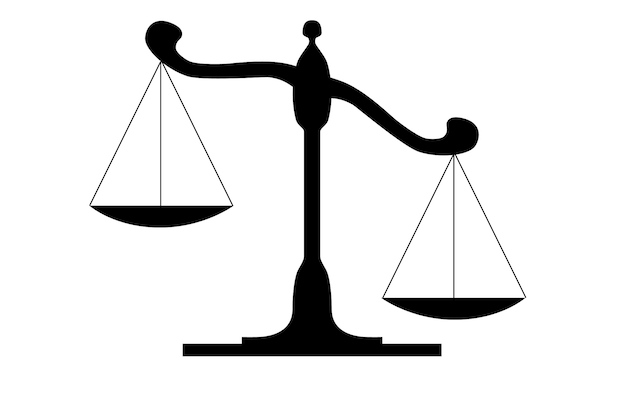
Putting well has a lot to do with having the ability to control speed, so the first thing that I want to identify is the optimal speed for golfers to maximize the 4.25-inch width of the hole.
According to AimPoint Technologies, on a missed putt, a golfer’s ball should stop 6-to-8 inches beyond the hole, which is about one revolution of the golf ball. For every revolution past that, a golfer diminishes the effective size of the hole by 12 percent. So, if golfers frequently roll the ball 1, 2, or 3 feet past the hole, they significantly lower their chances of making the putt. The previously noted “18 inches” past the hole as optimum speed may have worked in the past, but today’s green speeds require us to roll the ball at a much slower pace.
Hands and Pressure
Our hands act as scales, sending information to our brains helping to lift objects of various weights. Almost instantly, we know how much energy is needed to throw a baseball 10 feet versus the same distance with a sledge hammer. To control the speed of our putts, our brain deciphers the weight of the putter, the speed of the stroke and the distance to the target in nanoseconds. It is essential to match the weight of the putter to each golfer’s internal perception of weight and speed to give them optimal speed control.
Related: “The Ultimate Putting Program (Part 1): The design of your putter influences aim.”
Grip pressure also plays an important role in controlling speed. A golfer’s grip pressure should be relatively light, and more importantly it should remain constant throughout the stroke. If a golfer’s grip pressure changes during the stroke, it is likely that he or she will alter the path and/or face of the club at impact, thus causing the ball to start on a line other than the intended one. It will also alter speed the speed of the stroke and may even lead to the dreaded “Y” word. I image a lot of us have heard the old phrase of “hold the putter as if you were to hold a baby bird.” I also like the analogy of “hold the putter as though you were holding an open tube of tooth paste.” Whatever analogy you like, hold the putter with light grip pressure and most importantly keep the pressure constant throughout the stoke.
Green Speed
I assume golfers struggle more on fast greens than they do on slow ones, because on fast greens it can be rather easy to send a few balls racing by the hole and then become timid of the speed. Trust me, I have experienced it myself and it is rather frustrating. I have come to learn that golfers can easily adapt to the speed of the greens by making a slight alteration to the weight of their putter.
Above: High-end putters made by Odyssey, Scotty Cameron, Nike, TaylorMade and many others incorporate adjustable weights in their soles to help golfers fine tune head weight.
Edel Golf fitters like me believe golfers should use a heavier putter on fast greens than they do on slow greens. Now, I am sure you’re thinking that it should be the complete opposite, but here is why we believe what we do. The equation for kinetic energy is expressed by “one half the mass multiplied by the square of the velocity,” E=.5MV^2, which shows that the velocity of the stroke has a greater impact on energy than the mass of a putter. This being said, golfers will swing a heavy putter slower than a light putter, thus being advantageous on fast greens. A light putter will serve golfers well on days when the green speeds are slower.
A putter that has adjustable weights offers great benefit to someone who plays golf courses where the green speeds differ or change from one week to the next. For instance, wouldn’t it be nice to have the ability to make your putter lighter on days when you’re leaving the majority of your putts short of the hole on the practice green? I know from experience that when preparing for a tournament it is very likely that the tournament course will have greens much faster than what I am accustomed to playing. In this situation, it may be advantageous to have the ability to alter the weight of my putter to accommodate for the change in green speed. It is certainly worth experimenting.
Stroke Type
Most putting instruction has been been broken down into two distinct styles of the putting stroke; radial and linear. A golfer’s stroke type influences how weight should be distributed throughout the putter. Players with radial strokes are ones where the motion of their stroke originates from a centered point, i.e. the shoulders, or elbows. These players usually have an equal or even a longer backstroke than there forward stroke, control speed by the length of the stroke and maintain a consistent rhythm. Tiger Woods and Stan Utley are an example of a player and a coach who utilize the radial stroke type.
Above: Many great putters, including Tiger Woods, work to maintain a consistent “arc” in their putting strokes.
Players with linear strokes are ones who apply linear thrust to the handle of the golf club in a way that moves it more parallel to the ground. These players usually have a shorter backstroke than forward stroke, and control distance by the speed of the stroke. Jack Nicklaus and Dave Stockton are an example of a player and a coach who utilize the linear stroke type; so do Phil Mickelson and Rory McIlroy.
Above: Many top golfers and coaches advocate the “straight-back straight-through” putting stroke.
The combination of a golfer’s stroke type and the weight distribution of their putter significantly influences their ability to control the speed of their putts. Players who use a radial stoke generally prefer more weight in the club head and/or a softer shaft flex, because they like to “feel” the club head throughout the stroke and “release” it through impact. Players who use a linear stroke generally prefer a putter with weight in the handle to offset the thrust that they apply to it. In recent years, counter weighting has become popular, which can offer great benefit to players with linear stroke types.
Both radial and linear stroke types are acceptable, but players who take advice from both schools of thought will find themselves lost and confused. It would be like trying to be a sprinter and a marathon runner at the same time; it just doesn’t work. My suggestion is to find an experienced putting coach and ask him to help you identify what stroke type best suits your natural tendencies. Identifying what stroke type that is most natural to you should give you an idea of what type of weighting will benefit your game the most.
In my next article, I will explain how aim, speed, and the balance of a putter (toe weighted vs. face weighted) have a direct influence on the path of a golfer’s stroke.
To Continue With The Ultimate Putting Program:
- LIKE38
- LEGIT3
- WOW1
- LOL1
- IDHT0
- FLOP1
- OB1
- SHANK0
Instruction
Clement: Laid-off or perfect fade? Across-the-line or perfect draw?

Some call the image on the left laid off, but if you are hitting a fade, this could be a perfect backswing for it! Same for across the line for a draw! Stop racking your brain with perceived mistakes and simply match backswing to shot shape!
- LIKE0
- LEGIT0
- WOW0
- LOL0
- IDHT0
- FLOP0
- OB0
- SHANK1
Instruction
The Wedge Guy: The easiest-to-learn golf basic

My golf learning began with this simple fact – if you don’t have a fundamentally sound hold on the golf club, it is practically impossible for your body to execute a fundamentally sound golf swing. I’m still a big believer that the golf swing is much easier to execute if you begin with the proper hold on the club.
As you might imagine, I come into contact with hundreds of golfers of all skill levels. And it is very rare to see a good player with a bad hold on the golf club. There are some exceptions, for sure, but they are very few and very far between, and they typically have beat so many balls with their poor grip that they’ve found a way to work around it.
The reality of biophysics is that the body moves only in certain ways – and the particulars of the way you hold the golf club can totally prevent a sound swing motion that allows the club to release properly through the impact zone. The wonderful thing is that anyone can learn how to put a fundamentally sound hold on the golf club, and you can practice it anywhere your hands are not otherwise engaged, like watching TV or just sitting and relaxing.
Whether you prefer an overlap, interlock or full-finger (not baseball!) grip on the club, the same fundamentals apply. Here are the major grip faults I see most often, in the order of the frequency:
Mis-aligned hands
By this I mean that the palms of the two hands are not parallel to each other. Too many golfers have a weak left hand and strong right, or vice versa. The easiest way to learn how to hold the club with your palms aligned properly is to grip a plain wooden ruler or yardstick. It forces the hands to align properly and shows you how that feels. If you grip and re-grip a yardstick several times, then grip a club, you’ll see that the learning curve is almost immediate.
The position of the grip in the upper/left hand
I also observe many golfers who have the butt of the grip too far into the heel pad of the upper hand (the left hand for right-handed players). It’s amazing how much easier it is to release the club through the ball if even 1/4-1/2″ of the butt is beyond the left heel pad. Try this yourself to see what I mean. Swing the club freely with just your left hand and notice the difference in its release from when you hold it at the end of the grip, versus gripping down even a half inch.
To help you really understand how this works, go to the range and hit shots with your five-iron gripped down a full inch to make the club the same length as your seven-iron. You will probably see an amazing shot shape difference, and likely not see as much distance loss as you would expect.
Too much lower (right) hand on the club
It seems like almost all golfers of 8-10 handicap or higher have the club too far into the palm of the lower hand, because that feels “good” if you are trying to control the path of the clubhead to the ball. But the golf swing is not an effort to hit at the ball – it is a swing of the club. The proper hold on the club has the grip underneath the pad at the base of the fingers. This will likely feel “weak” to you — like you cannot control the club like that. EXACTLY. You should not be trying to control the club with your lower/master hand.
Gripping too tightly
Nearly all golfers hold the club too tightly, which tenses up the forearms and prevents a proper release of the club through impact. In order for the club to move back and through properly, you must feel that the club is controlled by the last three fingers of the upper hand, and the middle two fingers of the lower hand. If you engage your thumbs and forefingers in “holding” the club, the result will almost always be a grip that is too tight. Try this for yourself. Hold the club in your upper hand only, and squeeze firmly with just the last three fingers, with the forefinger and thumb off the club entirely. You have good control, but your forearms are not tense. Then begin to squeeze down with your thumb and forefinger and observe the tensing of the entire forearm. This is the way we are made, so the key to preventing tenseness in the arms is to hold the club very lightly with the “pinchers” — the thumbs and forefingers.
So, those are what I believe are the four fundamentals of a good grip. Anyone can learn them in their home or office very quickly. There is no easier way to improve your ball striking consistency and add distance than giving more attention to the way you hold the golf club.
More from the Wedge Guy
- The Wedge Guy: Golf mastery begins with your wedge game
- The Wedge Guy: Why golf is 20 times harder than brain surgery
- The Wedge Guy: Musings on the golf ball rollback
- LIKE88
- LEGIT14
- WOW6
- LOL1
- IDHT0
- FLOP4
- OB1
- SHANK8
Instruction
Clement: Stop ripping off your swing with this drill!

Not the dreaded headcover under the armpit drill! As if your body is defective and can’t function by itself! Have you seen how incredible the human machine is with all the incredible feats of agility all kinds of athletes are accomplishing? You think your body is so defective (the good Lord is laughing his head off at you) that it needs a headcover tucked under the armpit so you can swing like T-Rex?
- LIKE0
- LEGIT3
- WOW2
- LOL0
- IDHT0
- FLOP0
- OB0
- SHANK2
-

 19th Hole2 weeks ago
19th Hole2 weeks agoJustin Thomas on the equipment choice of Scottie Scheffler that he thinks is ‘weird’
-

 19th Hole2 weeks ago
19th Hole2 weeks ago‘Absolutely crazy’ – Major champ lays into Patrick Cantlay over his decision on final hole of RBC Heritage
-

 19th Hole3 weeks ago
19th Hole3 weeks agoTwo star names reportedly blanked Jon Rahm all week at the Masters
-

 19th Hole2 weeks ago
19th Hole2 weeks agoReport: LIV Golf identifies latest star name they hope to sign to breakaway tour
-

 19th Hole3 weeks ago
19th Hole3 weeks agoNeal Shipley presser ends in awkward fashion after reporter claims Tiger handed him note on 8th fairway
-

 19th Hole2 weeks ago
19th Hole2 weeks agoBrandel Chamblee has ‘no doubt’ who started the McIlroy/LIV rumor and why
-

 19th Hole1 week ago
19th Hole1 week agoLET pro gives detailed financial breakdown of first week on tour…and the net result may shock you
-

 Equipment2 weeks ago
Equipment2 weeks agoJason Day on his recent switch into Srixon ZX5 and ZX7 Mk II irons

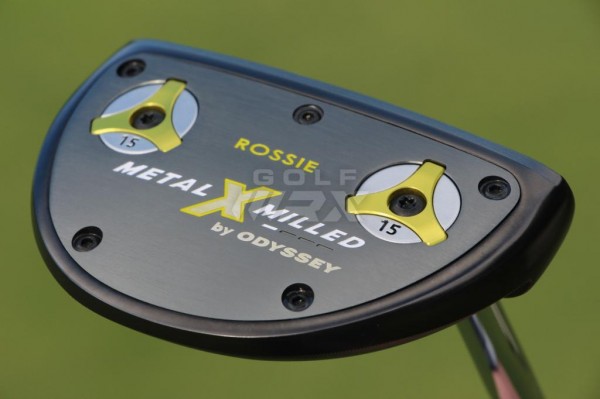
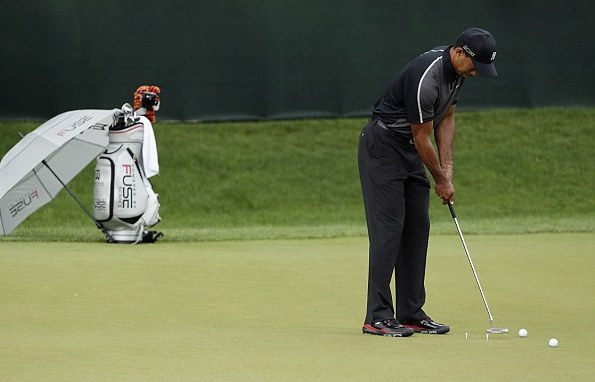
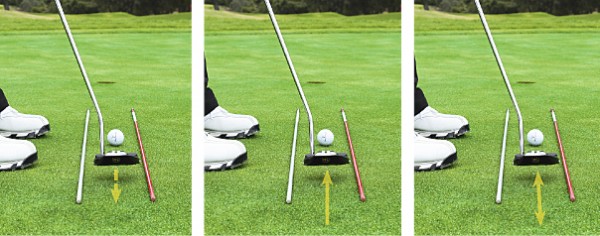
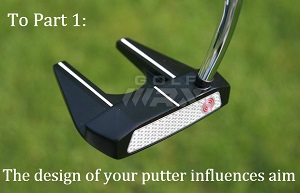

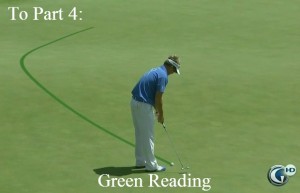
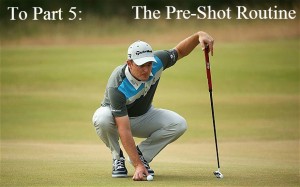

























Henry Stetina
Dec 19, 2013 at 7:53 pm
JM, I apologize as well. A wrong choice of words on my behalf.
JM
Dec 20, 2013 at 7:28 am
No problem and I apologize as well.
If I offended you or came off as rude or arrogant then I am sorry. It is so easy for tone to be misconstrued and I could have chosen my words more carefully.
Thanks for all the info and your patience with me.
JM
joro
Dec 19, 2013 at 9:43 am
Isn’t science wonderful. You should do it this way, or you should do it that way, or you should use this and that. The fact is that good putters can Putt, other can’t Putt a lick and that is it, just like hitting the ball, some got it, most don’t. It is all in what you do with what that counts.
Henry Stetina
Dec 19, 2013 at 9:48 am
Absolutely. What I am describing is not going to take a 25 hdcp and turn him into scratch. It can improve a player’s game by a few strokes though which is a very nice improvement.
joro
Dec 19, 2013 at 9:55 am
I agree Henry, it is good to improve a player. As a teacher and player for a loooong time I have seen it all and in my day without the Gurus we learned how to play and the ones with the most talent played for money, that was it. I have no doubt you are good at what you do, and so am I. Just different eras, not good, not bad. Best to you and Merry Christmas.
Henry Stetina
Dec 19, 2013 at 7:45 pm
Thanks. Merry Christmas to you too joro.
I don’t think altering the weight of putters is anything new. Plenty of players from past eras have commented on adding and removing lead tape to try to find better touch on the greens. This is anything but new.
John Claypoole
Dec 28, 2018 at 12:05 pm
Henry,
Great series on Putting especially Part 2. My name is John Claypoole and I am introducing a new product at the PGA Show in Orlando the week of January 21 called Newton’s Collar. Take a look at our website http://www.newtonscollar.com. It seems like a simple product but you need to try it to see the benefit. It is a sliding counterweight up an down the shaft that changes the feel of the putter. Depending on the individual some like it close to the bottom, midway up the shaft and a little above the center of the shaft. It is much like a metronome used in the music industry that changes the speed of the beat depending on where you slide the weight up and down the shaft. It is designed to slow the back swing and forward spring while keeping the club face square with the ball, exactly what you talk about in your series Part 2. WE are changing the center of gravity and moment of inertia for any size golfer.
It comes with a thumb screw easy to adjust to find what is right for you. Then it comes with a set screw and allen wrench to make it difficult to remove without a tool in order that it complies with Appendix II of USGA Rules about attachments. You cannot move it during play to comply with the rule once you start your round of golf.
Further if you look at some of the videos by Bill Presce of Directed Force Putters and watch his demonstration of how the putter behaves in is Revealer apparatus, you can understand why many putters cause you to twist the face of the putter ( wobble ) as you approach the ball.
We have a great interest in professional club fitters that can sell a Newton Collar to have client find the right weight and location on the putter as a starting point for sizing the wright putter for the client.
Newton’s Collar comes in 3, 4 and 5 oz weights and you can add 2 to each putter if you need more weight.
Contact me at [email protected] for more information
Nick
Dec 19, 2013 at 12:58 am
I am a club fitter for a major OEM. I use 3D motion capture as my primary means of analysis during all putter fittings. In my experience, adding at least some weight to a stock putter always produces better results.
In addition to better feel and more forgiveness, I have found that adding weight to the putter also has a positive impact on the stroke itself. Many of my customers demonstrate a “loop” in the transition phase where the club re-routes itself to the inside or outside of the backswing. The additional weight helps to minimize the loop or eliminate it altogether. The results are even better when the putter is counterbalanced.
If you are interested in a new putter, I would recommend trying a heavier and/or counterbalanced putter. You will be pleasantly surprised by the results.
Henry Stetina
Dec 19, 2013 at 9:55 am
Nick, Thank you for sharing this. You are spot on! This is why so many of the large OEMs are now offering counterbalanced putters. It is a good thing for most stroke types
Henry Stetina
Dec 18, 2013 at 11:56 am
Rick and Dave,
You guys are absolutely wrong about holding the putter tight whether it be with the hands, wrists, arms, etc. Suppleness is key to touch and feel, rhythm and grace. It is extremely important to have soft hands. The fingers are one of the most sensitive parts of the body.
Henry Stetina
Dec 18, 2013 at 11:56 am
I mean Russ… sorry
JM
Dec 18, 2013 at 2:18 pm
I thought Palmer said he gripped the Putter extremely tight.
Do you have any Sam puttlab data that shows a tight grip pressure is less effective Than a light grip pressure? Or is this just a belief/feeling?
Henry Stetina
Dec 19, 2013 at 12:17 am
Sure, Palmer may have held the club tightly, but as a whole, almost all good golfers hold the club lightly. I don’t have SAM data
JM
Dec 19, 2013 at 6:05 am
So you have zero data but anyone who disagrees with you is “absolutely wrong”?
That is an interesting way to prove your point. Especially considering any other time someone proposes an alternative view or questions your view on this article or the first one you typically ask if they have data or a way to prove their point
Henry Stetina
Dec 19, 2013 at 10:01 am
I don’t use SAM but I have plenty of data that backs the statements that I have made. I am not trying to be right or wrong. I am just sharing information and trying to give people a different perspective. Why do you insist on trying to prove me wrong? You have been arrogantly rude on both of my articles. You don’t have any facts or experience to back your claims. You just regurgitate information from someone who have read online. What’s your deal?
JM
Dec 19, 2013 at 3:10 pm
Sorry if i came off as rude, definitely not my intention.
it seems to me you are contradicting yourself. You say you dont want to be right or wrong but you claim others are “absolutely wrong” when they said something you dont agree with or that the studies you have read do not support
Im not trying to be rude and i am not just regurgitating what i have read from one person. Yes i referenced another instructor previously but he is not the only person i have learned from or am referencing. I learned quite a but on my own playing. It seems to me you are “regurgitating” info from other studies that you did not do as well so what is the difference if i reference other studies. Is it because they dont fall in line with your method or you think they are invalid?
I too believe putter weight effects putting just in a different or more varied way than presented here in this article. You were pretty condescending in your replies to me in the other article and judging by your comments on the stroke path example response i made in the other article i think you may have misunderstood what i was trying to convey, which is probably a reflection of my poor communication skills.
I would actually be interested in going through your fitting process. Honestly i think i could benefit from it. The point of my comments was to pick your brain a little not to offend or be rude.
Thanks
JM
Dec 19, 2013 at 3:44 pm
And my experience/facts that you claim i dont have comes from playing professionally for five years including pga and nationwide tour events.
Aside from that i have had the privilege of receiving instruction from great teachers at the leadbetter academy, the but h harmon academy among others.
Have a great day
joro
Dec 19, 2013 at 9:48 am
Tight is not a bad thing to many. In a pressure situation gripping the putter tight can help keep it steady. I have seen both work very well and there is no one way to do it. I have always gripped tight on a short putt I have to make. So did a lot of the older Pros as well as pop putting. If you subscribe to the long flowing stroke loose is fine, but not a short stroke. Be yourself and do what works.
Henry Stetina
Dec 19, 2013 at 10:11 am
Could gripping the club tightly be due to the fact that the pros that you are referring to played on greens much slower than what we do today?
Here are some guys who are “pretty good” putters describe grip pressure. And when I say “pretty good” I mean the very best in the world.
Your thoughts?
Crenshaw
http://www.youtube.com/watch?v=yDNxbdhbWvU
Faxon
http://www.youtube.com/watch?v=7yRXuMt2lOE
and
Roberts
Roberts
http://www.youtube.com/watch?v=x8CNFjXwuF8
joro
Dec 19, 2013 at 1:49 pm
my thoughts? and why are they so great. I have seen em all and sure the greens were slow, but we had some fast ones also. I am talking about firm fingers. So you think everyone should be loose at all times eh. Sorry, I disagree. I respect your thoughts, just disagree that should be the only way.
Henry Stetina
Dec 19, 2013 at 7:40 pm
I don’t think it is the only way. I do think it is advisable for MOST players to use soft hands, fingers, wrists, etc. But like anything, there are always exceptions.
Russ
Dec 18, 2013 at 11:38 am
One thing that I believe needs to be covered with putting and very seldom is, would be “wrist pressure”. I agree with light grip pressure but the wrist pressure is what the player should keep firm.
Dave
Dec 18, 2013 at 12:16 am
In simple terms the moment of inertia is the measure of a putter’s resistance to twisting on off-centre hits. The greater the moment of inertia, the less the putter blade rotation and loss of energy. Tighter grip pressure can negate missed sweet spots. I hold it rather tight. If I try light, its not as effective for me. The chief is in charge, not the arrow.
Speed dictates distance. so does the durometer of the face. Heavier heads are slower generally, less easy to be manipulated, but the speed of the golfer can easily adjust to any weight. The operator knows best after seeing results. Try this extreme putt with a 20 lb sledgehammer. Then reverse the test. holding the heavier end. Although the weight of a putter is nothing near a sledge, the same principles apply. I play with my own putters, it weights about 8 ounce more than average. head weight 400 to 470. The 8 ounces is in the grip. Balanced in the middle, for me is liken to be one with the putter. I rather not feel the head wight. Messes with my head. I see so many golfers with light heads, fail trying to manipulate the stroke instead of the ball just getting in the way of a smooth stroke. Mine is called Arrowhead Putters. Extremely adjustable tip to grip.
Henry Stetina
Dec 19, 2013 at 12:03 am
Yes, adding weight to the handle or mid-section of the shaft is beneficial and does not increase face rotation.
Bruce Rearick
Jun 6, 2014 at 2:23 pm
Henry,
If you don’t use a SAM how do you know what counter weighting does to rotation? One session on Puttlab with the same putter, counter weighted and then not and I think you would change your opinion.
(Counter Weight by using a lag bolt and washers. Screw the lag bolt into the vent hole on the grip.)
Bruce Rearick
Henry Stetina
Jun 9, 2014 at 1:29 pm
Bruce,
Would you like to share some of your knowledge/data?
Bruce Rearick
Jun 10, 2014 at 5:46 pm
Sure, but I am not making the claims.
I was wondering how you could make the claim without measurements. The test I posted is going to show some opposition to your claim.
I know the Puttlab people would be glad to refer you to someone with a PuttLab and you could compare your data with that result.
Bruce
roller
Dec 17, 2013 at 3:03 pm
“According to AimPoint Technologies, on a missed putt, a golfer’s ball should stop 6-to-8 inches beyond the hole, which is about one revolution of the golf ball.”
Huh? Wouldn’t one revolution of the ball be a distance equal to its circumference?
Henry Stetina
Dec 17, 2013 at 6:13 pm
Yes. The circumference of a golf ball is a fraction less than 6 inches.
JM
Dec 18, 2013 at 2:20 pm
I believe you may be thinking of diameter instead of circumference. The diameter of a ball is 1.68 inches therefore the circumference would be 1.68 times pi or roughly 5.28 inches.
JM
Dec 18, 2013 at 2:21 pm
I was addressing roller’s comment in my reply
Chris
Dec 16, 2013 at 7:39 pm
Henry,
Couple of questions regarding putter weights. You stated: A putter that has adjustable weights offers great benefit to someone who plays golf courses where the green speeds differ or change from one week to the next.
I would think that changing a putters weight would have a negative impact on a persons putting stroke. I am assuming your evaluations have shown that the time to adjust to a new putter weight is no different than adjusting to the green speed when you get to the course? Also, how much weight change to you advocate when using interchangeable weights. Also, since you use SAM, how much weight (added or subtracted) before the stroke becomes impacted? Logic seems to indicate that a heavier putter would rotate slower than a light putter.
Interested in hearing your thoughts and observations.
Thanks.
Henry Stetina
Dec 17, 2013 at 6:28 pm
Hey Chris,
Why do you think changing the weight of the putter would have a negative impact on a person’s putting stroke? How so? I am talking of being able to adjust the head weight but 10-20 grams; nothing outrageous. I am not certain how exactly how they do it but bowlers use different balls for different oil patterns.
Chris
Dec 17, 2013 at 9:18 pm
I guess the first thing that has to be determined is if changing the weight of a putter impacts how fast the putter rotates. All things being equal except weight, does a 330gr head rotate faster, slower, or the same speed as a 350gr head?
I personally think it would be slower. If it is slower, that should mean the putter would be more open at impact. Studies have shown that 1 degree will cause you to miss a 10 foot putt; I believe this stat was a large part of the Odyssey Versa marketing.
Henry Stetina
Dec 19, 2013 at 9:46 am
Yes, a heavier head will rotate slower than a lighter head. Adding weight doesn’t have to be to the head though. Counter weighting and internal shaft weight are great ways to increase overall weight without sacrificing face rotation.
JM
Dec 18, 2013 at 11:53 am
When I think of 10-20 gms that seems like a big change to me when talking about a golf club.
Do you have any data to show that putter weight does or does not change stroke path and putter face rotation? o
The reason bowlers use different balls for different patterns i believe is exactly the phenomenon that chris describes, it changes release point and effects ball rotation. I can double check with my buddy who is a PBA bowler next time I see him.
I would think that heavier putters would be slower to release given there is more heft/weight for the player to return to rotate/release. if the putter is a true center shaft then it may or may not rotate slower because it is face balanced or face weighted.
My thinking is that any time you add weight to any part of the putter including the grip, the putter should rotate slower.
I don’t think this is always negative (player may need slower rotation) but I still feel it is a variable that should be accounted for.
What do you think and what does your data show?
thanks
myron miller
Jun 9, 2014 at 12:54 pm
Actually using different bowling balls is entirely related to the coefficient of friction. Different balls have different “grip” patterns. Some grip the lane more than others. If its a “slick” oil pattern, then you need something that will grip more than if its a “dry – grippy” oil pattern. And it also depends upon how much bend the bowler wants on the shot. Typically the “strike” or first shot, you want a moderate amount of bend to improve slightly the angle of the ball going into the pins, and create a turning effect to improve carry reaction.
However, on the second ball, accuracty is more important so you want the ball to not break much if any at all. Thus you want the ball to skid more.
There is absolutely no change in weight for 99% of the bowlers, especially the pro’s. Change in surface and ball materials they are made with, absolutely, tons of differences.
In years past I was a PBA member so I’m somewhat familiar with this topic. Its not unusual for a pro to carry 4-8 or more (i’ve seen 40-60 balls for some) balls to a tournament and for the pro to use several. The grips are the same, the release usually the same although that might change for the second “spare” shot, but generally the surface friction is very different for each balls.
Especially for the strike shot, generally a person will use depending upon the oil conditions, a different ball (made of different materials – more less friction dependent) depending upon the amount of curve that person wants. Sometimes they’ll vary the release but generally they try not to do that because that can generate inconsistencies in the release and the more consistent that release is, the better the scoring capabilities (same as consistency in swing).
Putty
Dec 16, 2013 at 2:23 am
I get that heavier putters swing slower…….. but at the same time, the MOI connection force exerted by the heavier putter will be stronger (momentum = mass x velocity, after all) – therefore there is a possibility that, with the heavier putter, the extra mass may send the ball out faster if the putter is not designed with more MOI to control that fraction of a second of the hit. Don’t you think? Any physicists out there who can calculate that, whether a hit with a lighter putter is better than a smooth stroke with a heavier one, for example?